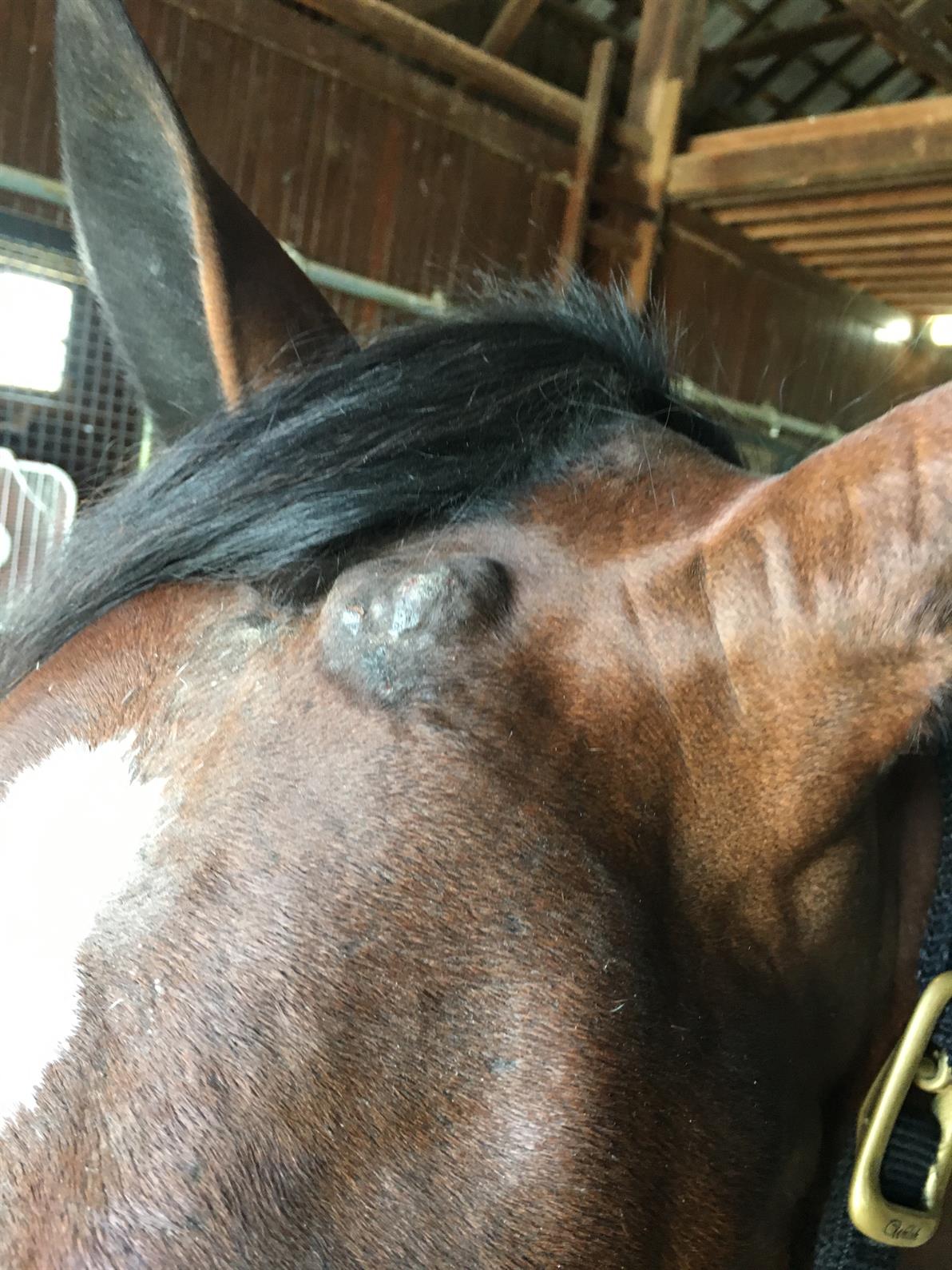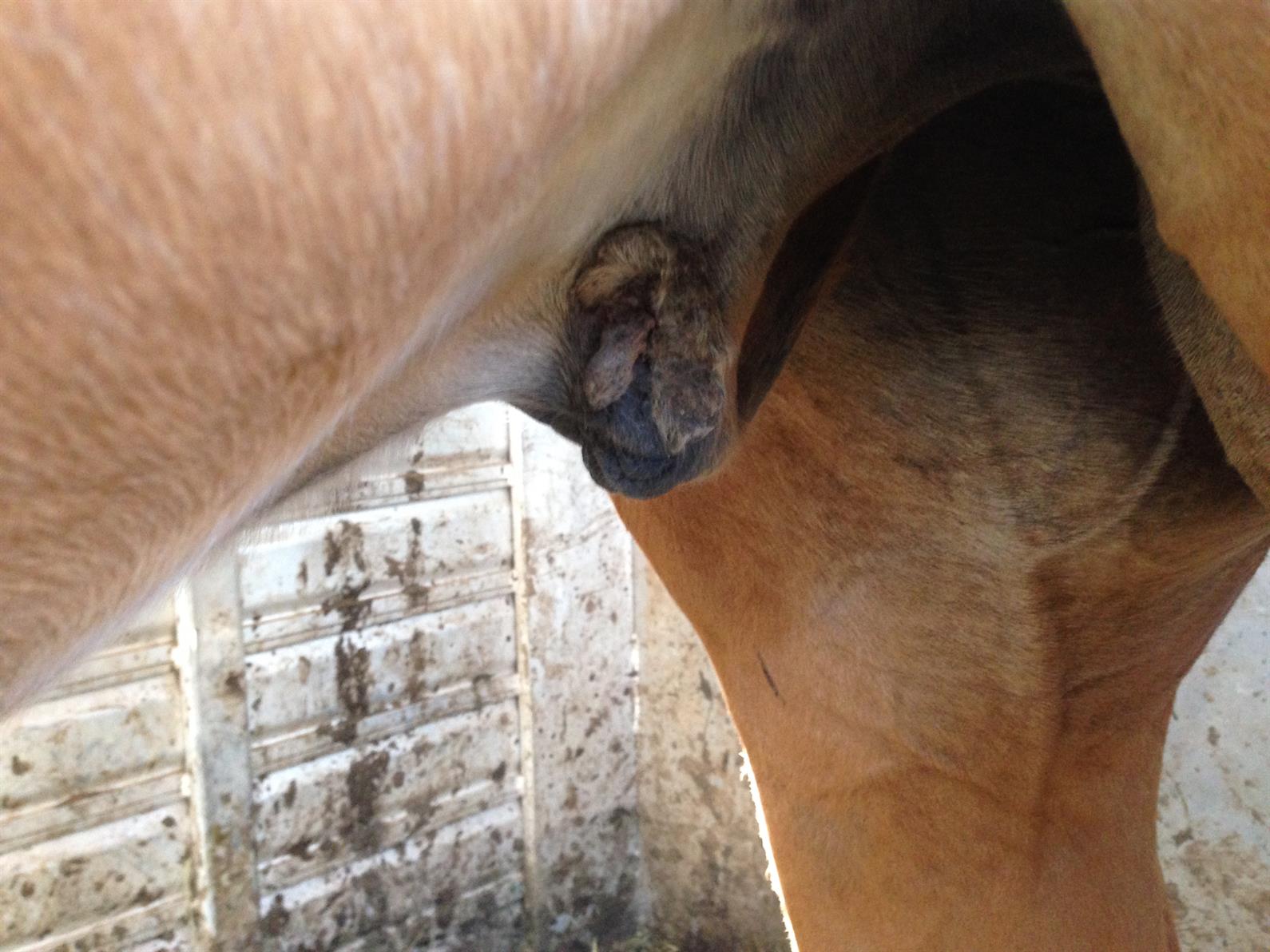The horse is afforded a fly mask with ears and appropriate insect repellant solutions are consistently applied. In the majority of horses the warts spontaneously disappear 1 to 6 months after they initially appear.

Paduan Teh Hijau Dan Madu Bisa Menumpas Jerawat Benarkah Jerawat Obat Jerawat Teh Hijau
On young horses treatment is not necessary as papillomas will go away within a few months as the horse develops its own resistance to.

How to treat papillomavirus in horses. 18 46 Papillomas affect horses throughout the world and along with sarcoids SCCs and melanomas are one of the four most commonly reported skin tumors of horses. Squamous cell carcinoma SCC is the second most common malignant neoplasm in the horse and most commonly arises from the eyelid. Cutaneous papillomas are caused by Equus caballus papillomavirus type 1 EcPV-1.
Theorizing that the same treatment might be effective for both conditions the researchers treated canker in three horses with cisplatin a drug used in sarcoid treatment. In four horses surgical tumour ablation was. Causes of Wobbler in Horses.
Affected horses are generally younger than 2 years of age. These 2 horses had metastatic involvement of the regional lymph nodes. Sarcoid disease was diagnosed by clinical examination and bovine papillomavirus types 1 and 2 from intact skin and tumour tissue.
Robert H Koontz DVM Chief Executive Officer. Lipomas typically appear as soft occasionally thin discrete lumpy masses and most move freely when touched. These 2 horses had metastatic involvement of the regional lymph nodes.
But for questionable lesions a veterinarian can take a biopsy to make sure the bumps arent sarcoids a type of skin tumor or another type of infection or tumor. A third equine papillomavirus was recently isolated from an ear papilloma which is thought to be the possible cause of aural plaques found in horses ears. To avoid transmission of the virus horses that have warts should not be housed with share tack with or share feed and water sources with uninfected horses.
Pinnal acanthosis is a very difficult condition that should not be treated. 54 63 Surveys of diagnostic laboratory submissions probably underestimate the prevalence of cutaneous papillomas because they are easily recognized. The papillomatous lesions were observed to decrease gradually 1 week after the last vaccination and all warts had resolved within 23 weeks.
Previously few studies have been conducted for the equine SCC on the role of equine. The exact cause of Wobblers in Horses is probably multifactorial. It is considered that the syndrome is caused by genetic predisposition.
Papillomavirus PV causes benign and malignant epithelial neoplasms in various species including humans dogs and cats. Solar UV-induced damage is believed to be the etiology. Three horses with cutaneous papillomatosis were administered two doses of a formalininactivated preparation of papillomatous lesions at 7day intervals.
Control of biting insects is imperative to stop the spread of the virus. Many lipomas merge with healthy fat tissue next to them making it difficult for the surgeon to identify the edges of the tumor. As nine horses had more than one lesion a total of 47 sarcoids were treated by daily topical application of aciclovir 5 per cent cream for a period of two to six months.
In horses familial predisposition is high dietary energy intake and trauma to the neck probably all play a role as young large fast-growing animals often males are affected. Steroid creams and other soothing ointments are applied to encourage healing. Equus caballus papillomavirus type 2 has been isolated from papillomas and squamous cell carcinomas SCC affecting the genital area of horses.
Recovery of Ear Papillomas in Horses Horse owners gently clean their companions ears with some frequency. Their collaboration may pave the way for the development of a cure. Equine papillomavirus cannot be spread to humans.
The aim of this study was to evaluate formalin-inactivated autovaccination to treat cutaneous papillomatosis and to perform molecular typing of the papillomavirus in four horses two foals one 3-year-old filly and a 5-year-old stallion. Of the 3 succesfully treated horses 2 treatments consisted of en bloc penile and prepuce resection with penile retroversion. Surgical removal is the recommended treatment.
Among the horses with canker 25 tested positive for the virus. Work by Sabine Brandt and colleagues at the University of Vienna School of Veterinary Medicine -- together with British pathologist Tim Scase and with Alastair Footes group from Rossdales Equine Hospital and Diagnostic Centre in Newmarket -- provides strong evidence that a novel papillomavirus is involved in the equine form of cervical cancer. Timecourse Onset over 24 weeks with some resolving lesions and some new lesions at first than gradually spontaneous resolution of the typical papilloma.

All About Sarcoids Us Equestrian

Gorgeous Equines Horses Horse Care

All About Sarcoids Us Equestrian

Are Ear Plaques Better Left Alone The Horse Owner S Resource
Equine Warts Conley And Koontz Equine Hospital

Pin On Equine Sarcoids Natural Treatment

Bovine Papillomavirus 1 An Overview Sciencedirect Topics


0 comments:
Post a Comment